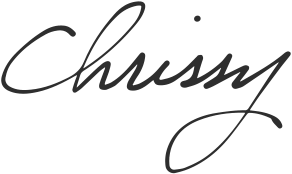There is no short-cut to becoming a good teacher. It takes time and experience. The craft of teaching demands practice—as Patanjali suggests—for a long period of time, without break, and in earnest. I know what you’re thinking: “But Chrissy, what am I supposed to do while I wait for experience? I have to teach my next class in an hour!”
I totally get it, navigating the awkwardness of inexperience is hard. I remember walking into the classroom those first few years feeling like a total fraud and how tempting it was to cover up my insecurities with over-instruction, fancy sequencing, or superficial spirituality. I learned quickly that this will only pull you off course and make this inherently long road even longer. Here’s my advice: Rather than trying to make up for what you feel you lack, focus on editing out what stands in your way.
The art of the edit is one of the sharpest tools you can use to refine your teaching skills. Editing is the practice of finding the shortest distance between what you know and what your students need. Like a sauce reducing on the stove, editing boils our teaching down to its essence.
The best thing you can do is to keep it simple. Editing is just that—the process of stripping away everything that is not essential to your teaching. This principle applies to new and seasoned teachers alike, but is especially valuable if you’re working through insecurities or inexperience. Here are some tips you can implement right away.
When it comes to your instructions, say less. Taken at its most literal, I mean stop talking. Practice editing the number of words that come out of your mouth. To do so, I recommend audio or video recording yourself teaching, and then choose a section to transcribe into a script. It’s an extremely effective (albeit cringe-inducing) exercise; vague instructions, clunky transitions, and unconscious speech patterns will become painfully clear. Grab a red pen and be (compassionately) ruthless; cut out anything and everything that is not absolutely essential. Identify unnecessary descriptors, crutch words, and jargon. Edit, edit, edit. It will help you get to your point. Once you see your default patterns, you can change them.
Tightening up your instructions creates more space in your teaching. Acknowledge the anxiety that arises in the silence and resist the urge to fill this space with more instructions, however clear they may be. Use the space instead to cultivate your own skills of observation. Give a cue, and then step back and look at your students. Discern: Was it effective? Was it relevant? The answers are right in front of you. If your students are struggling to implement your instructions, find another way to communicate! Use different language, approach the concept from a different perspective, tailor your sequence to illustrate your point, offer tactile tools, or demonstrate. Discerning the relevance of your instructions demands a wide lens, the bandwidth to see the big picture, and the wisdom to pick your battles accordingly. Remember, not everything needs to be taught today. After all, what we choose not to say can make a bigger impact than what we do say.
Another important tip is to keep your sequences simple. Avoid the pressure to entertain your students with fancy choreography, or to prove your chops with overly-complicated sequences. You don’t need a lot of bells and whistles in order to deliver depth—yoga is profound enough. Strip your sequences down to the foundation and use a few main actions to support a larger concept.
Similarly, offer spiritual teachings in their most basic form. Edit philosophical concepts down to their essence and find relevant, accessible examples of how students might explore these principles in their own practice. Start with what’s happening on the mat and let it evolve from there. Prune the lessons from your own personal life experience down to a universal thread that can be woven into the fabric of our collective experience. Most importantly, share what you have come to understand with honesty and sincerity. Your authenticity will invite your students to cultivate the same kind of relationship with inquiry.
Like the practice of yoga itself, the practice of editing strips away everything that is not authentic to our teaching. This clarity creates the very container into which we can relax into ourselves. Mastering the art of the edit helps to reveal our natural confidence by allowing us to communicate the heart underlying our craft. If we share yoga using simple, honest language, our passion and natural confidence can’t help but to shine through.






Chrissy, Thank you for this beautiful post. Amazing, honest, reassuring and so valuable, as always. Thank you Thank you.
So true. Excellent article and beautiful writing.
Thanks so much for your comment!